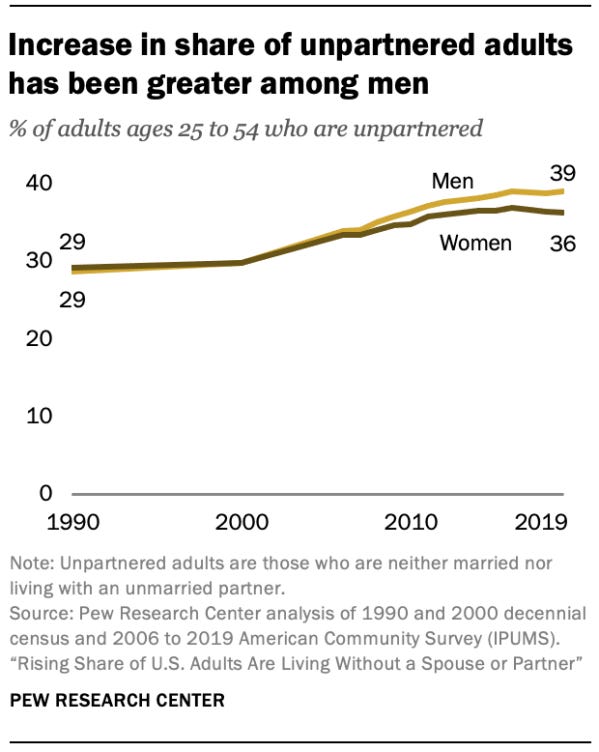Decade at Bernie's
Decade at Bernie's
in which endless hypersexualization trends toward complete sexlessness
Here’s the image of sex itself, richly represented in its powerful feminine form:
“Sexual liberation, our deceitful mirage, ends in lassitude and inertness,” Camille Paglia wrote. Well, yeah. Pump those hips at the stage a lot, ‘cause pumping hips is being sexy. We’re nearing the moment when every new cultural artifact representing sexual behavior and identity manifests the tone and form of the strippers working near the airport on the Tuesday afternoon shift, chewing gum and watching the clock. Slip the culture a twenty, and it’ll bend over to give you a really good look at it. The metastasization of the performative thing implies the withering of the spontaneous and authentic thing that it aggressively playacts at resurrecting: We must be really sexy and liberated, ‘cause we publicly depict the grinding of parts a lot. We’re living the Weekend at Bernie’s of sex, and pretending to have fun dragging the corpse around.
The relentless thrusting of frantic sexual performance into every cultural space — see what subtle thing I did there? — turns out to be the death of sex, or a death wish as sex, a tedious walk through an ugly graveyard. Drag queen thrusting and pumping is the exhaustion of sex, a pantomimed memory, in about the way that mukbang videos aren’t a celebration of food. If you doubt me, click here — it’s a story in the New Yorker, that important cultural arbiter — and look for the paragraph with the drag queen at the sex club and the sponge metaphor. It’s a mukbang video with genitals, a spectacle of joyless death-evoking overconsumption. Spend a few minutes with this video:
All this appetitive thrusting, all of these holes being filled: Notice how much of it looks like watching people kill themselves?
So idiot parents are taking their children to drag queen performances and other highly sexualized events, and childhood is being sexualized, and sexual performance is everywhere for everyone at all times. Weimar vaudeville is ubiquitous.
So sexy! And meanwhile:
Between 2000-2002 and 2016-2018, the proportion of 18- to 24-year-old individuals who reported having had no sexual activity in the past year increased among men (18.9% vs 30.9%; age-adjusted odds ratio [aOR] for trend across survey periods, 1.20; 95% CI, 1.04-1.39) but not among women (15.1% vs 19.1%; aOR for trend, 1.03; 95% CI, 0.89-1.18). Smaller absolute increases in sexual inactivity were observed among those aged 25 to 34 years for both men (7.0% vs 14.1%; aOR for trend, 1.23; 95% CI, 1.07-1.42) and women (7.0% vs 12.6%; aOR for trend, 1.17; 95% CI, 1.01-1.35) but not among those aged 35 to 44 years.
The increase in sexual inactivity coincided with decreases in the proportion reporting weekly or more sexual frequency (men aged 18-24 years: 51.8% vs. 37.4%; aOR for trend, 0.88 [95% CI, 0.79-0.99]; men aged 25-34 years: 65.3% vs 50.3%; aOR for trend, 0.87 [95% CI, 0.81-0.94]; women aged 25-34 years: 66.4% vs. 54.2%; aOR for trend, 0.90 [95% CI, 0.84-0.96]) or 1 sexual partner (men aged 18-24 years: 44.2% vs. 30.0%; aOR for trend, 0.88 [95% CI, 0.80-0.98]; women aged 25-34 years: 79.6% vs 72.7%; aOR for trend, 0.91 [95% CI, 0.84-0.99]) and occurred mainly among unmarried men (unmarried men aged 18-44 years: 16.2% vs 24.4%; aOR for trend, 1.14 [95% CI, 1.04-1.25]).
Sexual activity is declining, sexual connection is declining, sexual stability is declining, marriage and reproduction are declining. See also:
Which is the cause, and which is the effect? Does the frantic performance of exaggerated sexual behavior follow the decline of sexual connection, or cause it? Or both, in a cycle of reinforcement, sexless people performing a grotesque imitation of sex in ways that cause growing sexlessness?
Turn off the television, withdraw from the prevailing culture, and be a person.



Comments
Post a Comment